Compare the differences between win11 and win10 in detail
It has been less than a month since the win11 system was officially released on October 5. Many users don’t know whether they need to upgrade win11. They want to know the difference between win11 and win10, so today I will give you A detailed introduction to the differences between win11 and win10 is provided. Let’s take a look.
What is the difference between win11 and win10:
1. Appearance
1. The win11 taskbar all adopts the design of large icons and is displayed in the center by default.
2. The default taskbar merges. No matter how many software with the same name we open, they will overlap in one icon in the taskbar.
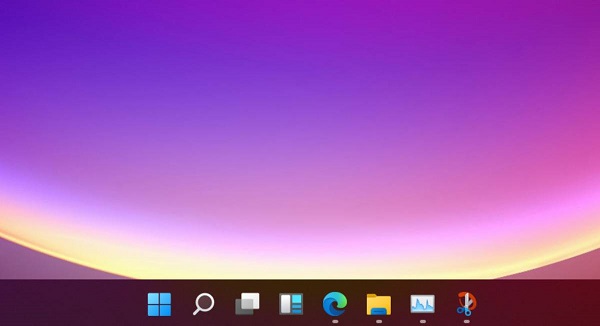
3. The dynamic magnet of the start menu has been cancelled, and all software or files will be displayed in it with simple icons.
4. All windows adopt a rounded corner design, including the start menu, application windows, resource manager windows, prompt windows, etc.
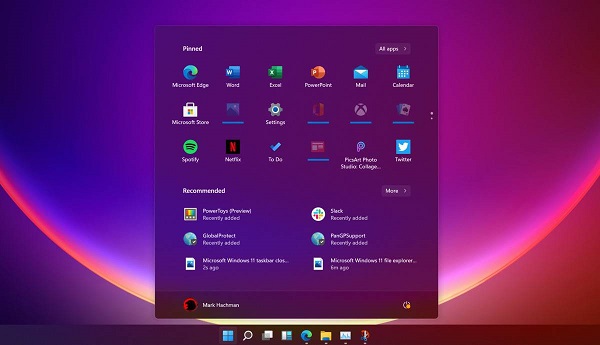
5. Added multi-task window layout design. Users can open and use multiple application windows on the screen at the same time, and freely design layout modes.

6. There will be more items and functions in the settings. It is hoped that in future updates, all settings can be made in the settings interface, thus replacing the control panel. Function.
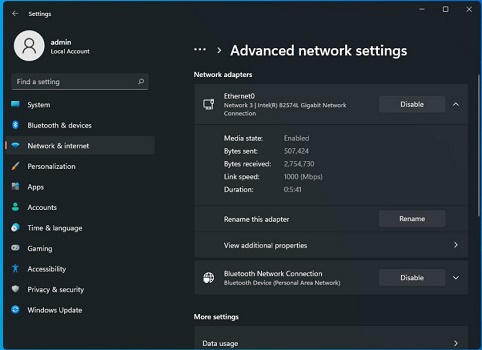
2. Application
1. Many new functional components specific to win11 have been added, including screenshot tools, team chat chat tools, etc.
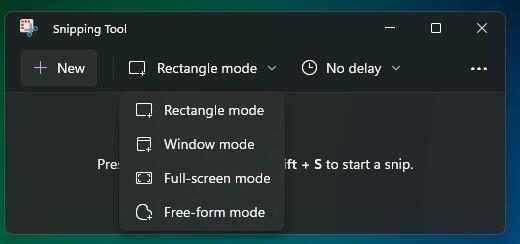
2. The win11 application store function has been added. There are more link expansion words to choose from when searching, and user developer software will also be displayed in it.
3. The scrolling animation has been optimized. When searching and browsing the app store, you will have a smoother, smoother and more comfortable operating experience.
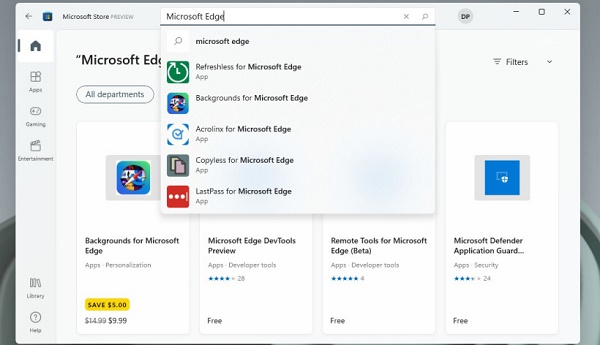
4. Compatible with Android apps, you can directly find and download, install and run Android apps in the app store.
5. However, the current win11 and the official version of win11 released on October 5 have not yet added this feature.

The above is the detailed content of Compare the differences between win11 and win10 in detail. For more information, please follow other related articles on the PHP Chinese website!

Hot AI Tools

Undresser.AI Undress
AI-powered app for creating realistic nude photos

AI Clothes Remover
Online AI tool for removing clothes from photos.

Undress AI Tool
Undress images for free

Clothoff.io
AI clothes remover

Video Face Swap
Swap faces in any video effortlessly with our completely free AI face swap tool!

Hot Article

Hot Tools

Notepad++7.3.1
Easy-to-use and free code editor

SublimeText3 Chinese version
Chinese version, very easy to use

Zend Studio 13.0.1
Powerful PHP integrated development environment

Dreamweaver CS6
Visual web development tools

SublimeText3 Mac version
God-level code editing software (SublimeText3)

Hot Topics
 1389
1389
 52
52
 Performance optimization and horizontal expansion technology of Go framework?
Jun 03, 2024 pm 07:27 PM
Performance optimization and horizontal expansion technology of Go framework?
Jun 03, 2024 pm 07:27 PM
In order to improve the performance of Go applications, we can take the following optimization measures: Caching: Use caching to reduce the number of accesses to the underlying storage and improve performance. Concurrency: Use goroutines and channels to execute lengthy tasks in parallel. Memory Management: Manually manage memory (using the unsafe package) to further optimize performance. To scale out an application we can implement the following techniques: Horizontal Scaling (Horizontal Scaling): Deploying application instances on multiple servers or nodes. Load balancing: Use a load balancer to distribute requests to multiple application instances. Data sharding: Distribute large data sets across multiple databases or storage nodes to improve query performance and scalability.
 Nginx Performance Tuning: Optimizing for Speed and Low Latency
Apr 05, 2025 am 12:08 AM
Nginx Performance Tuning: Optimizing for Speed and Low Latency
Apr 05, 2025 am 12:08 AM
Nginx performance tuning can be achieved by adjusting the number of worker processes, connection pool size, enabling Gzip compression and HTTP/2 protocols, and using cache and load balancing. 1. Adjust the number of worker processes and connection pool size: worker_processesauto; events{worker_connections1024;}. 2. Enable Gzip compression and HTTP/2 protocol: http{gzipon;server{listen443sslhttp2;}}. 3. Use cache optimization: http{proxy_cache_path/path/to/cachelevels=1:2k
 Problem-Solving with Python: Unlock Powerful Solutions as a Beginner Coder
Oct 11, 2024 pm 08:58 PM
Problem-Solving with Python: Unlock Powerful Solutions as a Beginner Coder
Oct 11, 2024 pm 08:58 PM
Pythonempowersbeginnersinproblem-solving.Itsuser-friendlysyntax,extensivelibrary,andfeaturessuchasvariables,conditionalstatements,andloopsenableefficientcodedevelopment.Frommanagingdatatocontrollingprogramflowandperformingrepetitivetasks,Pythonprovid
 Performance optimization in Java microservice architecture
Jun 04, 2024 pm 12:43 PM
Performance optimization in Java microservice architecture
Jun 04, 2024 pm 12:43 PM
Performance optimization for Java microservices architecture includes the following techniques: Use JVM tuning tools to identify and adjust performance bottlenecks. Optimize the garbage collector and select and configure a GC strategy that matches your application's needs. Use a caching service such as Memcached or Redis to improve response times and reduce database load. Employ asynchronous programming to improve concurrency and responsiveness. Split microservices, breaking large monolithic applications into smaller services to improve scalability and performance.
 The impact of exception handling on Java framework performance optimization
Jun 03, 2024 pm 06:34 PM
The impact of exception handling on Java framework performance optimization
Jun 03, 2024 pm 06:34 PM
Exception handling affects Java framework performance because when an exception occurs, execution is paused and the exception logic is processed. Tips for optimizing exception handling include: caching exception messages using specific exception types using suppressed exceptions to avoid excessive exception handling
 The Key to Coding: Unlocking the Power of Python for Beginners
Oct 11, 2024 pm 12:17 PM
The Key to Coding: Unlocking the Power of Python for Beginners
Oct 11, 2024 pm 12:17 PM
Python is an ideal programming introduction language for beginners through its ease of learning and powerful features. Its basics include: Variables: used to store data (numbers, strings, lists, etc.). Data type: Defines the type of data in the variable (integer, floating point, etc.). Operators: used for mathematical operations and comparisons. Control flow: Control the flow of code execution (conditional statements, loops).
 Questions and Answers on PHP Performance Optimization Architecture Design
Jun 03, 2024 pm 07:15 PM
Questions and Answers on PHP Performance Optimization Architecture Design
Jun 03, 2024 pm 07:15 PM
In order to improve the performance of concurrent, high-traffic PHP applications, it is crucial to implement the following architectural optimizations: 1. Optimize PHP configuration and enable caching; 2. Use frameworks such as Laravel; 3. Optimize code to avoid nested loops; 4. Optimize database, Build index; 5. Use CDN to cache static resources; 6. Monitor and analyze performance, and take measures to solve bottlenecks. For example, website user registration optimization successfully handled a surge in user registrations by fragmenting data tables and enabling caching.
 Unleash Your Inner Programmer: C for Absolute Beginners
Oct 11, 2024 pm 03:50 PM
Unleash Your Inner Programmer: C for Absolute Beginners
Oct 11, 2024 pm 03:50 PM
C is an ideal language for beginners to learn programming, and its advantages include efficiency, versatility, and portability. Learning C language requires: Installing a C compiler (such as MinGW or Cygwin) Understanding variables, data types, conditional statements and loop statements Writing the first program containing the main function and printf() function Practicing through practical cases (such as calculating averages) C language knowledge




